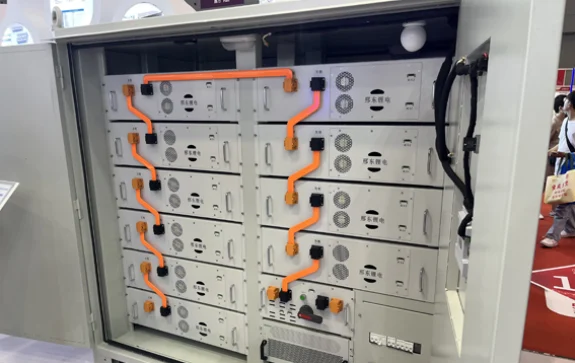2025-04-03
Battery pack: With car-grade lithium iron phosphate batteries, one cabinet's energy storage capacity is between 50 kWh and 300 kWh, equivalent to an average family's power consumption for 3 to 6 months. A special honeycomb structure frame provides a separate cooling space for each battery cell.
Smart Manager (EMS): Online monitoring of over 200 parameters like voltage balance, temperature fluctuations, depth of charge and discharge. Can automatically isolate the malfunctioning unit within 0.1 seconds if detected.
Power Converter: A bidirectional converter that "translates" the battery's direct current to 380V alternating current and converts electricity from solar photovoltaic panels to direct current for storage, with up to 98% conversion efficiency.
Safety Line: Double guarantee of heptafluoropropane gas fire extinguisher equipment and explosion-proof pressure relief valve. Automatically initiates a cooling program if temperature is above 65°C and can extinguish a fire in 10 seconds when encountering an open flame.

The "Electricity Bill Regulator" for Manufacturing Factories: A Zhejiang injection molding factory installed 2 sets of 300 kWh energy storage cabinets. Off-peak charging and peak-time discharging for production saved 470,000 yuan in electricity charges within a year and recovered the equipment cost in 3.6 years.
The "Battery Backup" of the Communication Base Station: A grassland 5G base station uses a combination of photovoltaics and energy cabinets to run off-grid. Even during 7 consecutive days of rain, it can provide 24 hours' power supply and reduce operations and maintenance expenditures by 60% compared to a diesel generator.
The "Buffer Pool" for Charging Stations: After a Shanghai bus charging station installed energy storage cabinets, the need for transformer expansion was reduced from 800 kVA to 400 kVA. It can provide 300 kW of power compensation when charging 10 electric buses collectively, avoiding grid overload penalties.
Specific Search Keywords: "Industrial and Commercial Energy Storage Systems" (for mass-market brands), "Integrated Photovoltaic and Energy Storage Units" (for photovoltaic matching applications), "Battery Cabinet BMS Certification" (to exclude qualified products), "Energy Storage Cabinet IP54" (for external protection level). Do not use non-technical keywords like "Large Power Bank" to avoid searching domestic products.
Parameter Code Understanding: Cycle life ≥ 6,000 cycles (usable for 16 years with daily discharge and charge), depth of discharge greater than 90% (to avoid false capacity claims), protection level IP54 for rain protection, IP65 for dusty conditions. Be careful of the "custom capacity" trap; standard modules are easier to expand later.
On-site Inspection Target: Press the steel plate of the cabinet hard; when the thickness is less than 1.5mm, there will be deforming. Check the nameplate of the battery cluster; the model of the battery cell shall comply with the contract. On-site test: power-off simulation and check whether the switching between the grid connection can be made within 20ms.
Capacity Level: Domestic energy storage units are mostly 5 - 20 kWh, while industrial energy storage cabinets start from 50 kWh, equivalent to 100 concurrent air conditioners.
Protection Standards: Industrial cabinets must comply with GB/T36276 certification, which is three grades more fire-resistant than domestic units and eight levels of earthquake resistance.
Connection Method: Household batteries are mostly connected with plug connections, and energy storage cabinets use industrial terminal blocks with an ability to handle a current surge over 1,000A.
Operation and Maintenance Method: Home appliances are mostly maintenance-free. In energy storage cabinets, the status of the contactor must be checked every month and SOC precision calibrated every quarter.
Residual Value Management: Home batteries are retired directly, while energy storage cabinets allow secondary use. Older generation batteries can be reused as backup power sources and utilized for 5 to 8 years.
As the time-of-use electricity prices policy is promoted, more and more businesses are realizing that energy storage cabinets are not an expense cost but a productive property that can generate returns. Within industrial parks, these neatly arranged metal cabinets are building the cornerstone of the new power regime.

Cabinet Battery: The “Electricity Insurance Box” of the Industrial World

What the Xiaomi SU7 Fire Tells Us About Lithium Battery Safety – And How to Not Be the Next Victim

An Analysis of Sudan’s Renewable Energy Policies: Investment and Innovation in Energy Storage Technologies

Ukraine’s Energy Transformation: The Central Role of Energy Storage Solutions to Attainment of Renewable Energy Targets

Togo’s Renewable Energy Policy: Investment and Technology Innovation in Energy Storage